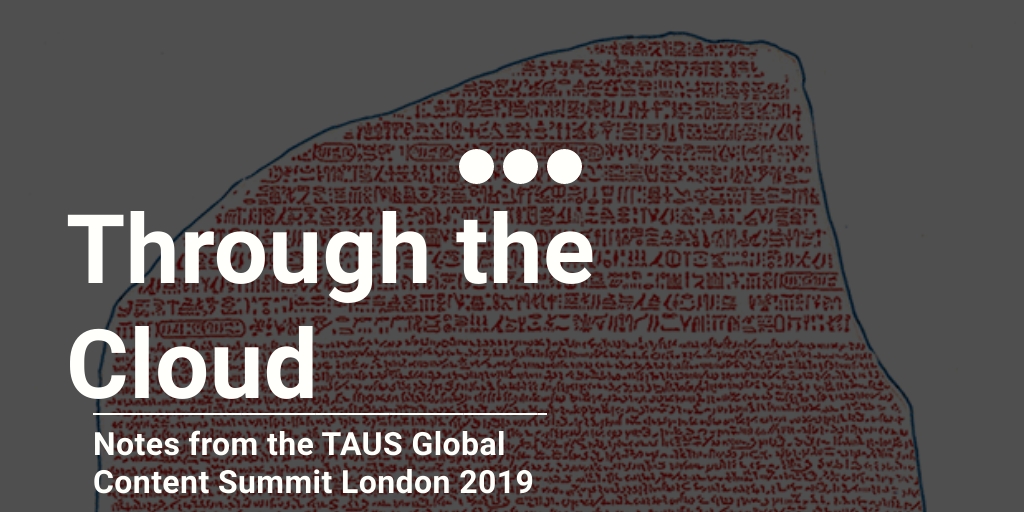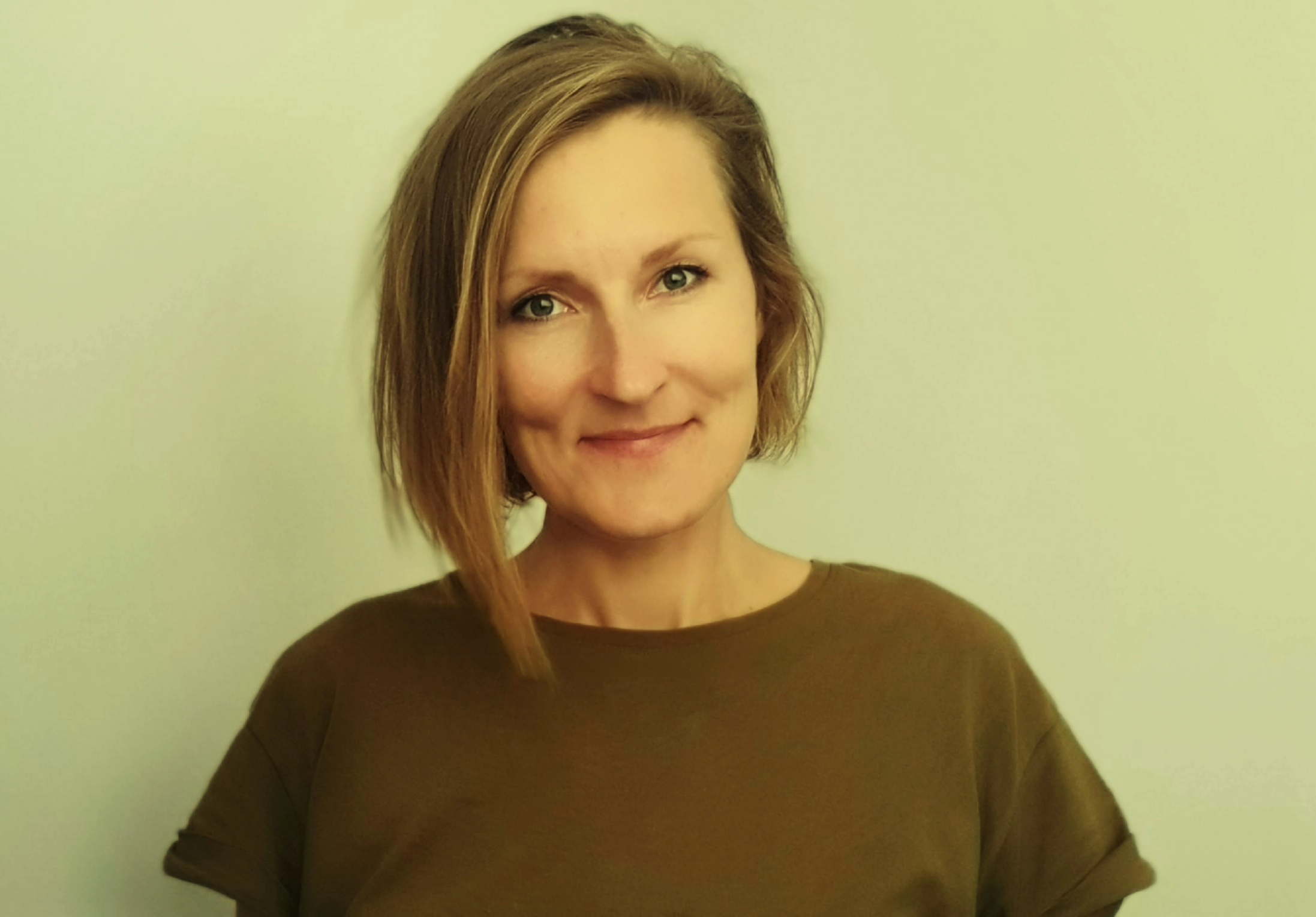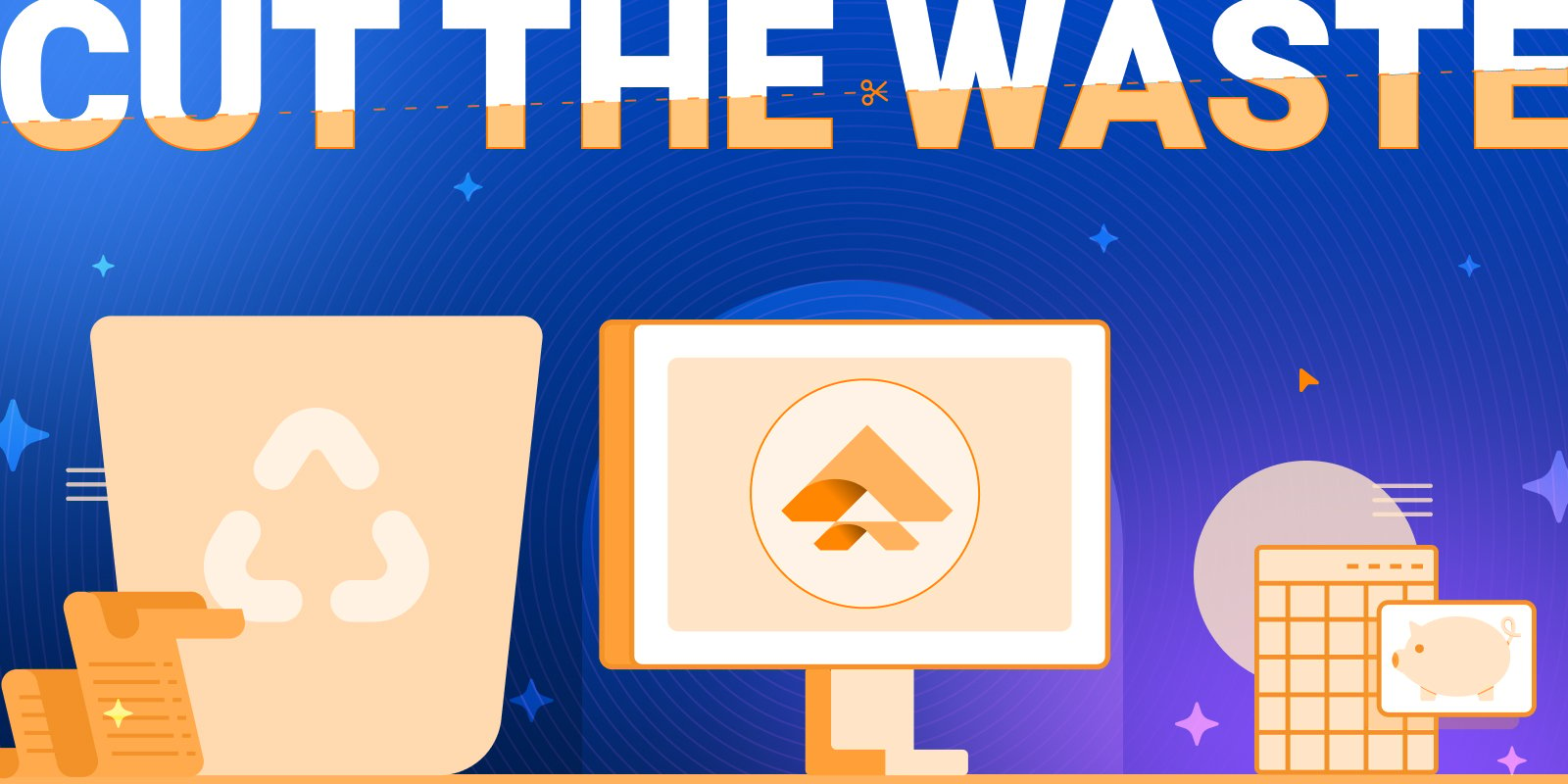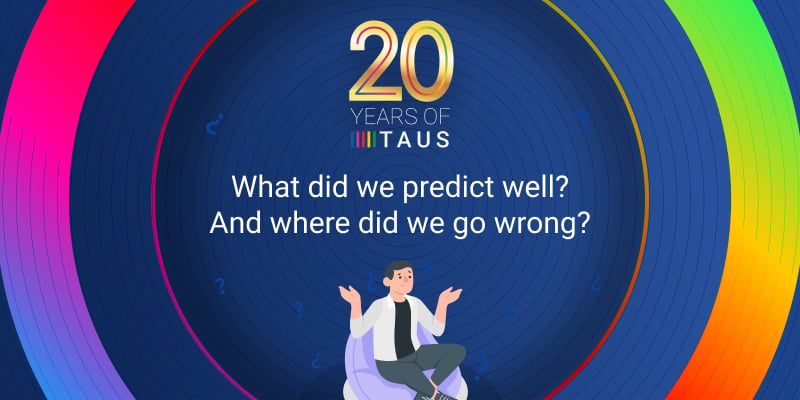How Technology Lifts Translation

At the TAUS Global Content Summit London, topic experts along with the CEOs of four of the biggest LSPs talked about quality management, the convergence between the publishing and the translation industry and machine translation use cases.
On 15 May, TAUS gathered at the Japanese Nobu Hotel in Shoreditch, London for the fifth TAUS Global Content Summit this year. On the agenda were panel conversations with the CEO’s of some of the largest LSPs in our industry, with content buyers, and with the technology providers, as well as presentations about quality management, the convergence between the publishing and the translation industry and machine translation use cases. It seemed that the theme throughout the day was honesty and openness. All the speakers left their kimonos behind on the stage and shared all.
Adolfo Hernandez (SDL), Smith Yewell (Welocalize), Nihat Arkan (thebigword) and Christian Arno (Lingo24) first joined Jaap van der Meer (TAUS) on stage for the CEO Conversation.
Disruptive Technology Breakthrough or Not?
In our industry, we tend to think it’s more revolutionary than it really is, claims Adolfo. Some of the innovations happening now in the localization industry happened in other industries about 10-15 years ago. According to Adolfo, this is just one more sub-industry facing the technology that’s already there. Nihat adds that the biggest change is how we are accessing the technology these days: through the cloud.
Smith prefers to talk about digital transformation instead of disruption. When he started Welocalize, the business was all about language. Now language is just another dataset, moving through a digital ecosystem. There are three transformations: workforce (finding the right people, right time, right task), content (not just different languages, but formats), and data (used to drive machine learning algorithms that produce AI capabilities).
It seems that the people from the IT world think having machines with human (intellectual) capabilities is more business as usual, while people coming from within the industry do see this as a bigger change or even revolution. When Smith was interviewed by TAUS for the Nunc Est Tempus eBook he already mentioned that at Welocalize, today, only 50% of the time is spent on actual translation. The other 50% of the time they are working on all kinds of other tasks, like brand, product and market research, creating product descriptions, blurbs and blog posts, measuring click throughs, time spent on site, conversion rates and more.
When asked how much of their business is currently MT, Lingo24 turned out to have the highest rate with 90%. At thebigword interpreting makes a large part of the business. Nihat estimates the amount of translation done with MT at 10%. At Welocalize and SDL, it depends heavily on the customer and the domain. Smith says that their big (IT) clients are all mostly on NMT while their customers from the legal side are mostly on HT. Adolfo says that 31% of their content was machine translated last year. But the remaining 79% is not fully human translation either: translation memories and post-editing are used at all times.
With machines taking over so much and human parity claims all around us, are we afraid we’re going out of business? “No” is the definite answer from everyone . We are constantly changing our business to cater for that 1% of all translations that is not doable by machines. Referring to what he said earlier, Smith says: if language is a dataset, one thing that does not go away is the security of your dataset. It needs constant cleaning and quality checks. A machine learning instance feeds on data (put in by humans) and will never be done learning.
Impact of Technology on the Buy-side
Alberto Ferreira (Travel Republic) and Monica Foresi (Expedia Group) joined Jaap on stage for a conversation between content buyers - coincidentally both from the travel services.
The data group at Travel Republic currently supports over 20 languages and is mostly focused on comparing and bringing together the marketing and user experience. Expedia supports 60 language (38 internally). They translate all types of content, from marketing, UI and customer support to subtitling and tv ads. They are focused not just on translation, but also on adding a piece of consultancy that the brand needs in terms of market insights and local relevancy.
Adding new languages depends on what the brand wants to do and what market they want to go to. The process from idea to delivery can take a couple of months: the team Alberto leads takes care of market and strategic research before any linguistic work is done. What does the market look like, what linguistic considerations are needed? For this, they engage with agencies in the country itself, with subject matter experts, and they do tests with users and speak with local focus groups. Monica explains that the process is very similar at Expedia. The decision to add a new language is made based on signals from the users.
MT is an Emotional Change
According to Monica, we need to take a step-by-step approach when introducing people to machine translation, because people react emotionally and are afraid they will lose their jobs. The priority here is to educate the team and help them develop different and new skills. Translators and quality managers become more tech-savvy and data readers. For all the different types of content and countries, the challenge is finding the ideal setup for each. Expedia has their own workflow system and plugs in out-sourced MT. Alberto says they are using MT in their translation workflow, but it’s always evaluated through human quality control.
So how do they measure quality of the translated content? At Expedia this is an internal process. They work with external users and stakeholders and aim for full alignment on the expectations and make changes where they see gaps. There is a constant feedback loop to keep the content at the highest standard. Alberto says that in previous companies he used an adapted version of DQF which worked really well. However, at Travel Republic they use an internal error typology as the metrics are more performative because they are based on what’s happening in terms of user behavior on the webpages.
A Peek into the Technology Kitchen
With Bob Willans (XTM International), and Gerd Janiszewski (Across Systems), Jaap had an honest conversation about how the technology breakthroughs in our industry affect their products and roadmaps. As technology providers, automation seems to have always been on their minds. At XTM, the goal was to automate everything they possibly could. A lot of the traditional manual processes (using desktops) could be automated because they used a web-based system. The workflow is easy to understand and configure. According to Bob, AI and machine learning is more evolutionary rather than revolutionary. MT has been around for a while, evolving from rule-based to statistical and now to neural.
At Across, they didn’t want to reinvent the wheel and with the budget restrictions compared to the giants, it’s hard to get ahead of the industry. Their goal is to try and find out how to differentiate. Data privacy seems to be their focus point when it comes to differentiating their product and services.
Roadmap and Vision Planning
XTM has a Jira system in place where ideas can come in from customers, the internal team and security teams. Each item is given a priority number (1-5). Whatever is requested and paid for by a client gets the top priority. Bob says: implications of change become more complex the more mature your product is (and the more lines of code are in place) and thus take a lot more time. Thirty percent of the developer’s time is reserved for maintenance/bug fixes, which means that the remaining seventy percent of the time can be spent on new features, partnerships, updates and more. With micro services in place, it’s a lot easier to do small updates and release them more frequently.
Across measures in story points. At all times, developer capacity is reserved for maintenance, bug fixes and third-level support. Depending on the life cycle of the product, this amounts to about 25% of the capacity. Then there are, of course, new features requested by the users, own ideas, co-financed and paid development tasks. The developers work closely with the management and sales team, who are close to the clients, to share ideas. They also have an advisory board and user groups to get strategic advice.
Both Bob and Gerd are not afraid of the new platforms and providers popping up as they see plenty of opportunities to evolve and adapt their business. The luxury of not being backed by venture capitalists is that they don’t have the pressure to grow as much as other players.
Not Business As Usual
As the technology advances, translation continues to get embedded in “not business as usual” services. Antonio Tejada, Managing Director at Capita Translation and Interpreting, took the stage to share some use cases. Their work enables the UK-based business outsourcing companies to evolve into not business as usual services, such as social media analysis for global investment banking, the use of multilingual chatbots in customer management, or how to integrate machine translation in large financial services or supporting multilingual document review in litigation. Antonio presented four use cases where, through their different technologies like SmartMATE and LiveLink, they support multilingual families in schools throughout the UK, through a combination of human and machine translation they generate a first screening decision for international employee screenings, and create courses for an eLearning platform in multiple languages simultaneously.
It was then time to showcase how technology affects different verticals. James Hewes (CEO of FIPP) joined us to give a very enlightening presentation on how the publishing industry has dealt with the disruption of technology. Coming from a very different perspective and not knowing exactly how the translation and localization business works, James’ presentation felt very refreshing. He presented the current trends in the publishing industry, which were (not) surprisingly similar to those we see in our own industry.
- Consolidation: M&As with new CEOs, visions and strategies
- Paid Content: putting content behind a paywall on the internet will bring in revenue again. Thanks to Netflix and Spotify, people are OK with paying for things online. The majority of revenue now comes from consumers, and no longer from advertisers. This realigns the dynamic: broadcasters think about their consumers and what they want instead of what the advertisers want.
- Advertising: is now responsible for only 25% of the revenue. In the digital age, advertising fraud is huge. No one knows if it’s true, real and who gets the money.
- Print Matters: People don’t mind paying for print if it’s unique, high-quality journalism that is not findable online.
- Platforms: producing different content per platform: video, podcasts, voice skills.
- AI helps with content recommendations, editing homepages, understanding UI and fast basic routine journalism. And of course: translation. Businesses in the translation industry are more international than they’ve ever been and there’s more difference between markets than there ever was. There’s no proven, reliable use case yet for translation without a human involved, even though this is highly expensive.
- Tech: Build or Buy?
- Talent & Culture: how we compete for talent, acquire the right talent, train the people, what skills do we need, how do we prep and manage them for change and keeping the business open for innovation.
The core lesson of James’ presentation: don’t rely on a single revenue stream to be a successful business!
Machine Translation & Machine Learning
At the end of the day, machine learning and machine translation finally came on the agenda. Natasha Latysheva (Welocalize) presented how machine learning, on top of machine translation, can change the entire translation pipeline, by providing more advanced tools for data gathering, filtering and cleaning. ML can also contribute by instilling a deeper understanding of input text by building summaries of the topics, entities, and sentiment within it; and providing powerful approaches to represent sentences numerically, through encoding their semantic meaning as a long series of numbers.
John Tinsley (Iconic Translation Machines), presented a number of use cases where neural machine translation has made a big impact. In addition to the first case on eDiscovery (which he presented in the TAUS Game Changers Innovation Contest last October and what won him the Game Changer of 2019 Award), he added two use cases from the life sciences industry. In both use cases, translation was not the only thing Iconic was doing for their clients. In the drug discovery and R&D sphere, the volume of content to be translated daily is huge and the content is very domain-specific. What Iconic is doing involves creating databases for searching and monitoring of research and inventions for drug development and IP, removing a lot of manual work, saving 78% in costs and translating 7 times faster than before. The other use case shows how Iconic helps with classification, entity detection and case generation of warnings about side effects of drugs and medical devices from the consumer. These used to come in through official letter, but now they are everywhere: on blogs, forums, walls, etc and 60% of these reports are in non-English. Iconic’s new motto: we do more.
For deeper conversations on similar topics and great networking opportunities, save your spot at the TAUS Global Content Conference and Exhibits.

Anne-Maj van der Meer is a marketing professional with over 10 years of experience in event organization and management. She has a BA in English Language and Culture from the University of Amsterdam and a specialization in Creative Writing from Harvard University. Before her position at TAUS, she was a teacher at primary schools in regular as well as special needs education. Anne-Maj started her career at TAUS in 2009 as the first TAUS employee where she became a jack of all trades, taking care of bookkeeping and accounting as well as creating and managing the website and customer services. For the past 5 years, she works in the capacity of Events Director, chief content editor and designer of publications. Anne-Maj has helped in the organization of more than 35 LocWorld conferences, where she takes care of the program for the TAUS track and hosts and moderates these sessions.
 by Dace Dzeguze
by Dace Dzeguze


